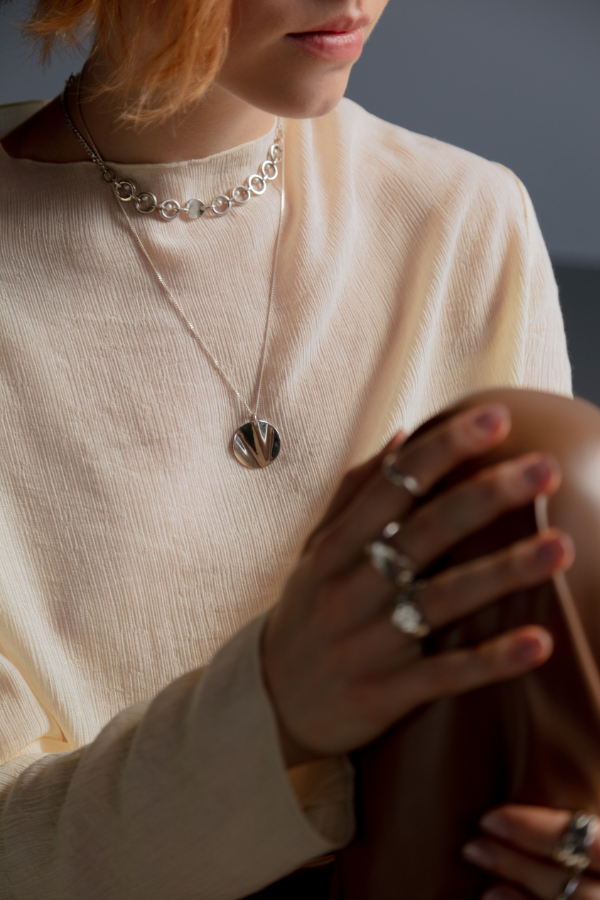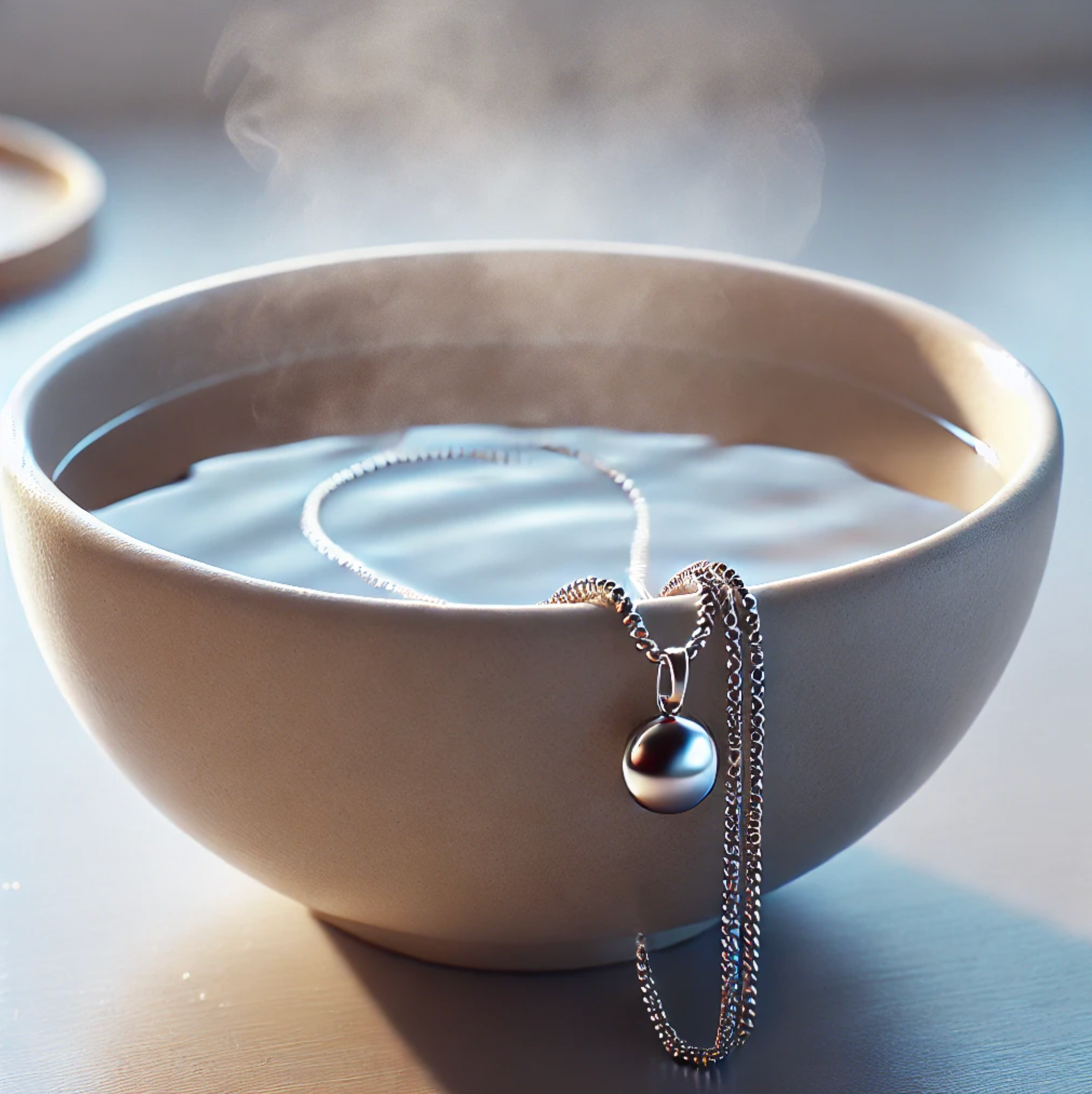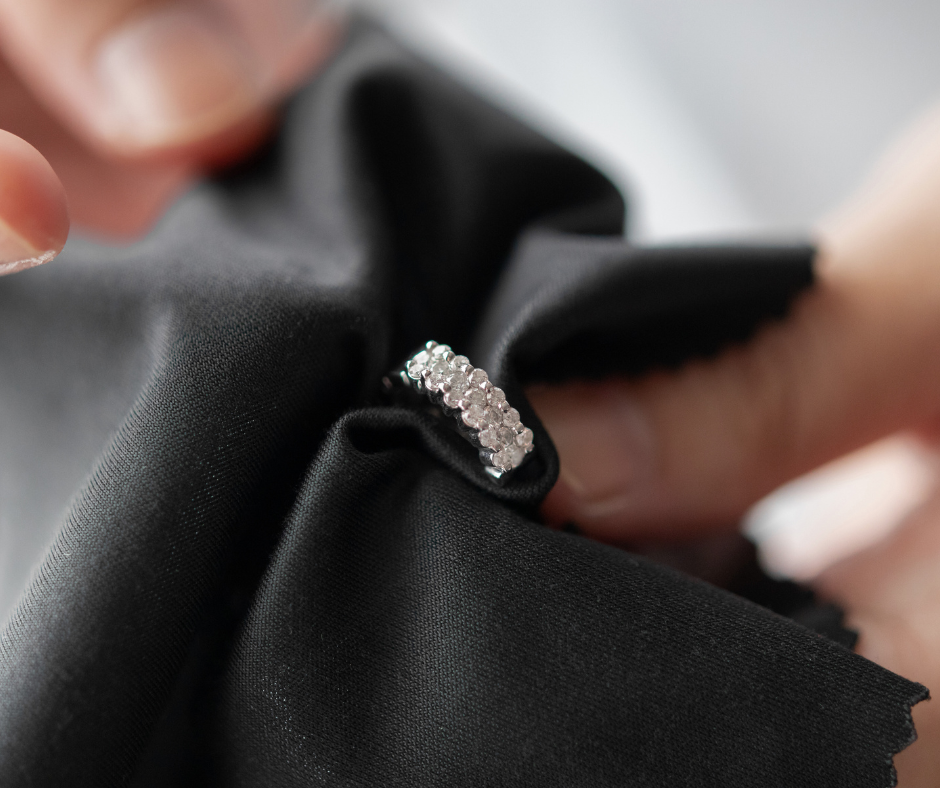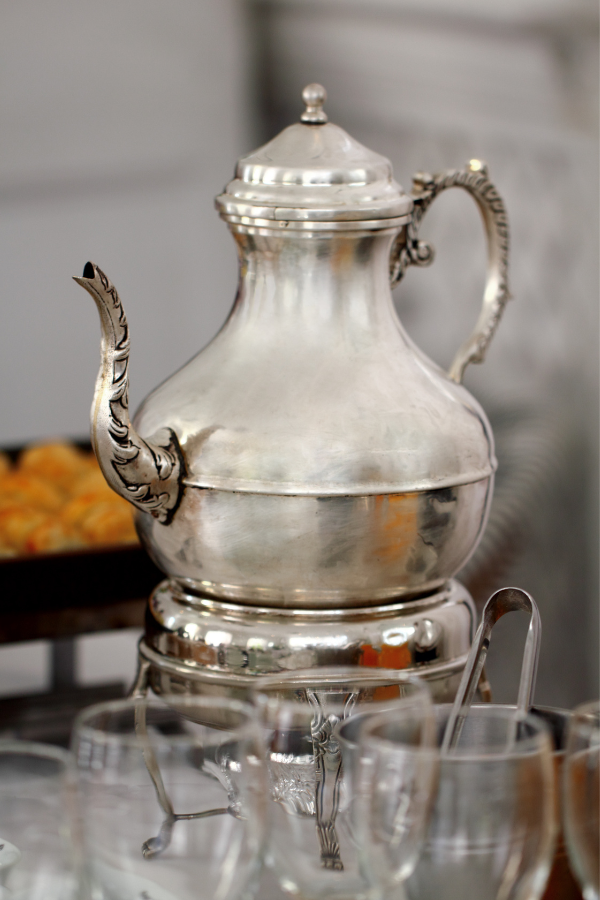
DesignDash Guide: How to Clean Silver at Home
Summary
The DesignDash Guide on how to clean silver at home offers practical tips, clear warnings, and exhaustive instructions to keep your silver looking its best. Using common household items like baking soda and hot water, or specialized silver cleaning products, you can easily maintain your silver jewelry, cutlery, and antiques. The guide also advises on what materials to avoid, how to use ultrasonic cleaners, and when to seek professional help for delicate or heavily tarnished pieces. Follow these steps to clean and polish your silver confidently.
Reflection Questions
- How often do you clean and maintain your silver items, and what methods have you found most effective?
- What are some challenges you face when cleaning silver at home, and how do you address them?
- Have you ever considered professional silver cleaning services for your valuable pieces? What factors influenced your decision?
Journal Prompt
Write about a cherished silver item you own. Describe its significance to you, how you care for it, and any special memories associated with it. Reflect on the process of cleaning and maintaining this piece and how it connects you to its history and value.
Readers love our DesignDash Guides for their practical tips, clear warnings, and exhaustive instructions. The DesignDash Guide on how to clean silver at home is no different! Keeping your silver looking its best can feel like a chore, but preserving the beauty and value of your favorite pieces is well worth the extra work. Whether it’s cherished sterling silver jewelry, heirloom silver cutlery, or stunning antique decorations, we know how much these pieces mean to you. In this guide, we’ll show you easy, effective ways to clean and polish silver pieces, but we’ll also tell you when to call in the experts. Learn to clean silver with confidence below!
Getting Started: Materials and Tools You’ll Need to Clean Silver Safely

Okay, how do you clean silver at home? You’ll need a few basic items you probably already have at home. Common household ingredients like aluminum foil, and vinegar are surprisingly effective for tackling tarnish and grime. These kitchen staples can work wonders on your silver without the need for harsh chemicals. We love the fact that you can actually clean silver with baking soda and hot water!
If you want to go the extra mile, there are specialty silver cleaning products designed to make your silver sparkle with minimal effort. These products are formulated to be gentle on your precious items while effectively removing tarnish and restoring shine. They’re great to have on hand for those particularly stubborn spots or when you want a professional-level finish.
And don’t forget the tools of the trade! Polishing cloths are a must-have for giving your silver a final buff and bringing out that beautiful gleam. Soft toothbrushes, microfiber cloths, and non-abrasive sponges are also handy for getting into nooks and crannies without scratching or damaging your items. With these materials at your disposal, you’ll be ready to make all your silver shiny again!
Materials and Tools to Avoid!
When it comes to cleaning your silver, knowing what to avoid is just as important as knowing what to use. Steer clear of abrasive materials like steel wool, harsh scrubbing pads, and gritty cleaners, as these can scratch and damage the delicate surface of your silver. Be especially careful to avoid these tools when working on silver plated jewelry, which can be very delicate.
Avoid using acidic substances like lemon juice or commercial cleaners not specifically designed for silver. They can cause discoloration or even corrosion over time. Another no-go is the dishwasher. While it might be tempting to pop your less than shiny silver cutlery in for a quick wash, the high heat and strong detergents can be too harsh. Stick to the gentler methods we recommend to keep your silver shining and in top condition!
Using an Ultrasonic Cleaner

Instead of cleaning pure silver by hand, you can use an ultrasonic cleaner. To do so, you won’t even need to add baking soda. Ultrasonic cleaners are effective for removing dirt, grime, and tarnish from silver jewelry, utilizing high-frequency sound waves to create microscopic bubbles in a cleaning solution. These bubbles collapse upon contact with the jewelry, creating tiny shock waves that gently yet thoroughly clean the surface and crevices of the silver pieces.
When using an ultrasonic cleaner, be sure to choose a cleaning solution specifically designed for silver or a mild soap and water mixture. Avoid harsh chemicals, as they can damage the silver. Place the silver jewelry in the cleaner’s basket, ensuring that pieces do not touch to prevent scratching. Run the ultrasonic cleaner according to the manufacturer’s instructions, usually for about 3-5 minutes. After cleaning, rinse the jewelry with clean water and dry it with a soft, lint-free cloth.
When Not to Use an Ultrasonic Cleaner on Silver
However, caution is necessary. Delicate silver jewelry with soft gemstones (like pearls, turquoise, or opals), glued settings, or antiqued finishes may not be suitable for ultrasonic cleaning. The vibrations can loosen stones or damage the finish. For these items, traditional hand cleaning methods are safer. Always check the manufacturer’s guidelines or consult a professional jeweler if you’re unsure about cleaning a specific piece with an ultrasonic cleaner.
Without further ado, let’s open the DesignDash Guide to Cleaning Silver at Home!
The DesignDash Guide to Cleaning Silver at Home

Regular cleaning is key to keeping your silver looking fabulous and tarnish-free. A consistent cleaning routine prevents the buildup of tarnish, which can be tough to remove if left too long. For lightly tarnished silver, a simple wash in warm, soapy water is usually all it takes. Just mix a bit of mild dish soap with warm water, gently clean your silver with a soft cloth or sponge, and rinse thoroughly.
Always dry your silver immediately with a microfiber cloth to avoid water spots. To prevent damage, be sure to avoid harsh scrubbing, and store silver in a cool, dry place, ideally wrapped in anti-tarnish cloth or in sealed plastic bags. Here’s how to clean sterling silver jewelry, tarnished silver, silvery cutler, and antique silver without damaging your items.
Your Step-by-Step Guide to Cleaning Silver Jewelry

Ingredients:
- Mild dish soap
- Warm water
- Soft toothbrush
- Microfiber cloth or soft cotton cloth
- Jewelry polishing cloth
Instructions:
1. Preparation:
- Check for any damage to your silver necklaces, rings, or bracelets—including loose stones.
- Gather all of your materials.
- Mix a few drops of mild dish soap into a bowl of warm water to create your cleaning solution.
2. Cleaning Process:
- Soak your sterling silver jewelry in the cleaning solution for a few minutes.
- Gently scrub the jewelry with a soft toothbrush, focusing on crevices and intricate details.
- Rinse thoroughly with clean water to remove all soap residue.
- Dry the jewelry completely with a microfiber cloth, ensuring all moisture is removed.
3. Polishing:
- Use a jewelry polishing cloth to restore the shine to your silver pieces.
- Avoid using any abrasive materials that could scratch the surface.
Your Step-by-Step Guide to Cleaning Tarnished Silver

Ingredients:
- Baking soda
- Aluminium foil
- Boiling water
- Plastic container
- Silver polishing cloth
Instructions:
1. Preparation:
- Gather all materials.
- Line the bottom of a plastic container with aluminum foil, shiny side up.
2. Cleaning Process:
- To clean tarnished silver, first place your items on the aluminum foil in the container.
- Sprinkle a generous amount of baking soda over the silver items.
- Carefully pour hot water into the container, ensuring all items are fully submerged.
- Let the silver soak for a few minutes until the tarnish is removed. Alternatively, create a baking soda paste.
- Remove the silver items from the container using tongs or a spoon.
- Rinse thoroughly with clean water to remove any baking soda residue.
- Dry completely with a soft cloth or microfiber towel.
3. Polishing:
- Use a silver polishing cloth to give your silver items an extra shine.
Your Step-by-Step Guide to Cleaning Silver Cutlery
Ingredients:
- Mild dish soap
- Warm water
- Soft sponge
- Microfiber cloth
- Silver polishing cloth
Instructions:
1. Preparation:
- Gather all materials.
- Mix a few drops of mild dish soap into a bowl of warm water to create your cleaning solution.
Fuel your creative fire & be a part of a supportive community that values how you love to live.
subscribe to our newsletter
*please check your Spam folder for the latest DesignDash Magazine issue immediately after subscription

2. Cleaning Process:
- Wash the silver cutlery in the warm, soapy water using a soft sponge, ensuring all surfaces are cleaned.
- Rinse thoroughly with clean water to remove any soap residue.
- Dry the cutlery immediately with a microfiber cloth to prevent water spots.
3. Polishing:
- Use a silver polishing cloth to maintain the luster and shine of your cutlery.
Your Step-by-Step Guide to Cleaning Antique Silver Items
Ingredients
- Warm water
- Soft toothbrush
- Specialized silver cleaner
- Microfiber cloth
Instructions:
1. Preparation:
- Gather all materials.
- Mix a few drops of mild dish soap into a bowl of warm water to create your cleaning solution.
2. Cleaning Process:
- Gently clean the antique silver item with the soft toothbrush dipped in the soapy water, taking extra care with delicate areas and intricate details.
- Rinse the item thoroughly with clean water to remove any soap residue.
- Dry the silver item with a microfiber cloth, ensuring all moisture is removed.
3. Polishing:
- Apply a specialized silver cleaner recommended for antiques, following the product instructions.
- Avoid using abrasive methods to preserve the patina and intricate detailing of the antique piece.
Final Thoughts: When to Leave it to the Experts
Sometimes, it’s best to leave your precious metal jewelry in the hands of experts. If you have delicate or valuable items like family heirlooms or intricate antique pieces, professional cleaning is the way to go. These pieces often require specialized care to preserve their intricate details and historical value without causing damage.
There are certain signs that professional conservation or restoration is needed ASAP. If your silver items have severe tarnish that doesn’t come off with regular cleaning, significant scratches, or structural damage like dents or loose parts, it’s time to call in the professionals. They have the tools and expertise to restore your silver safely and effectively.
Finding reputable silver cleaning and restoration services is easier than you might think. Start by asking for recommendations from friends, family, or local jewelers. You can also check online reviews and ratings to find trusted professionals in your area. Look for services with restorers or conservators who specialize in silver and have a track record of satisfied customers. With the right expert, your silver will be in great hands and can be restored to its former glory.
Explore More DesignDash Guides

- The DesignDash Guide to Cleaning Solid Gold Jewelry at Home
- DesignDash Guide: Market Research Tips for Women Starting New Creative Businesses
- DesignDash Guide: How to Create An Aesthetic Bullet Journal
- DesignDash Guide: Here’s How to Become a Florist
- DesignDash Guide: Planning for Maternity Leave as a Freelancer
- The DesignDash Guide to Navigating Art Fairs and Craft Shows
- DesignDash Guide: Buying Property in Portugal as an American
- DesignDash Guide: How to Become a Freelancer as a Life-Long Employee
- The DesignDash Guide to Digital Detox Retreats








